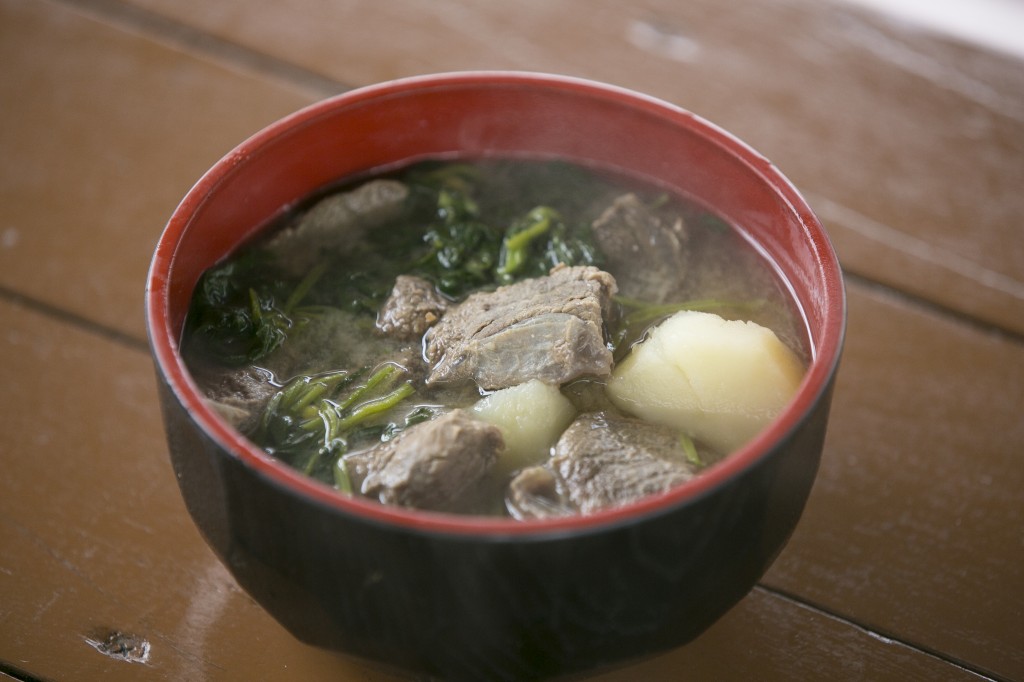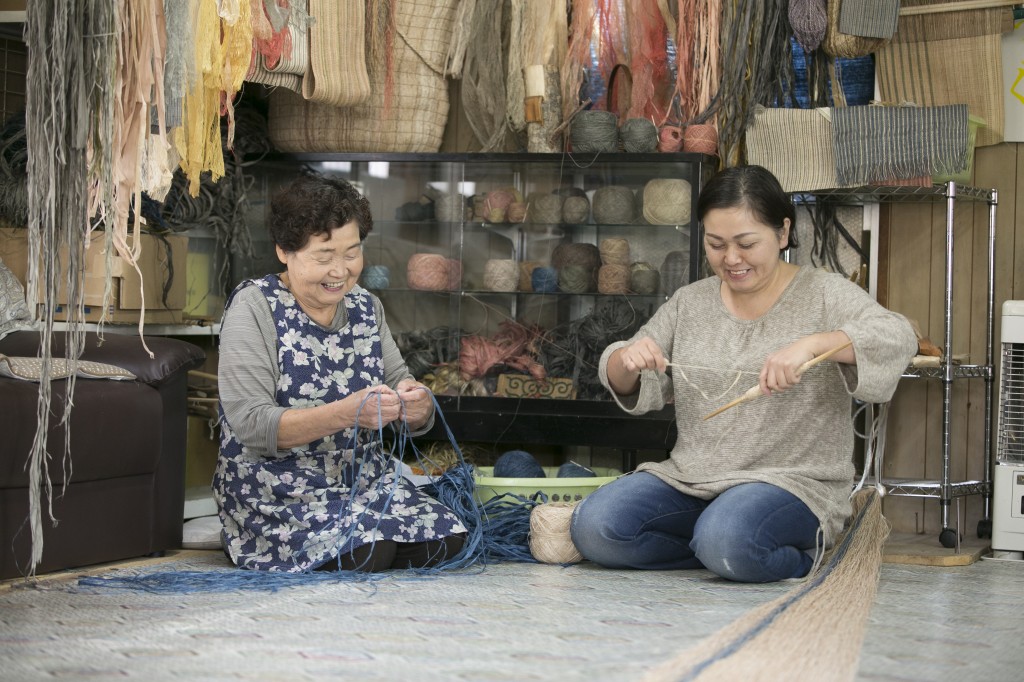TRAVELOGUE Hokkaido
Every Meal is a Gift From Kamui
- text : Cultureland Tsuguya Fujita
- photo : Akira Sato
- edit : nano.associates Seiji Takeuchi
chapter 3
「“Hard-Won Simplicity: Sito Dumplings”」
Learning that there is a shop called “Lunch House BEE” in Biratori-cho serving the Ainu sito (dumpling) and shika jiru (deer soup), I drove along the Hokkaido Expressway from Shiraoi to the Tomakomai Higashi exit, then on the Hidaka Expressway to get to Biratori-cho.
Lunch House BEE stands just beside town center, alongside Route 237. Ms. Yukiko Kaizawa is the cheerful grandma looks far younger than her 73 years. She presents us with Ainu cuisine along with great stories. Yukiko’s daughter, Ms. Maki Sekine, was also there to help her.
Ms. Kaizawa told me, “What I really do is weaving attus, Ainu’s traditional textile fabrics. I cook Ainu food only when I get a large group of guests requesting it. Ingredients for Ainu dishes are not readily available. I will cook sito today, and the bulbs of ooubayuri I need for that is something I need to dig up at a nearby mountain in May. Then, the bulbs are soaked in water before grinded in a mortar. After a few other steps they will ultimately be dried and made into starchy flour. The very first batch of the starchy flour, ichibanko, will be gifts or used for medical purpose, then the secondary batch, nibanko, is used to make sito.”
Her story depicted how Ainu people carry out everything they do in sync with the timings of the nature, matching harvest to when the gift of the nature will be ready.
Sito made out of ooubayuri is cooked simply on a frying pan once starchy flour is kneaded with water and turned into dumpling-size balls. The texture is quite heavy, similar to that of rice cakes, but its flavour is very simple, as you would imagine from it being made from only the kneaded starchy flour. Modern version might be served with salty-sweet sauce to suit modern tastes, but the original sito taste is very plain and simple.
“Shika Jiru: Reminding us to be Grateful for Animal Meat”
In the past, deer were plentiful and therefore readily hunted by the Ainu people. However, back in the Meiji Period (1868-1912), deer hunting was prohibited throughout the land of Hokkaido in order to protect the dwindling species. Nowadays, as reports of damage and injury to humans and property by deer, the government has once again permitted deer hunting.
The daughter, Maki, cooked shika jiru (deer soup) with some deer meat. How do we make shika jiru? Firstly, frozen deer meat is boiled and washed with cold water. This process skims the scum of the meat.
Next, the deer meat is put in a pan filled with water and then is stewed for 2-3 hours until it turns tender. After that, a wide range of ingredients are added, various things you can find around in the kitchen, such as mushrooms, burdock root, butterbur or mountain vegetables etc.. The soup is ready as soon as those ingredients are cooked and become soft in texture.
“For Ainu people, oil and salt were the only two things they used to season meals, but nowadays, we use miso to give a more widely accepted flavour and also add potatoes to make it more modern. My whole family loves shika jiru. We Ainu people call all different kinds of leaves kina. It’s the same for past and present that we add dried kina just before eating the soup,” said Maki.
Deer meat in shika jiru isn’t used so much for strong flavour, but for the sensation of eating chunky meat with a firm texture. The soup has a very natural yet rich flavour, and you find yourself asking for more and more.
“I had this opportunity to be born as a human, so I need to try doing my best living this life…”
The comment above was something Yukiko quietly told me during our time together. She sounded as if she was cautioning herself, and at the same time as if she was advising someone else… For the Ainu people, all things – be they deer, brown bears, rabbits, ooubayuri (lily), inakibi (millet), bracken and butterbur – all animals, plants and humans are equal under Kamui. When I heard her comment, I thought she was probably thinking that because she happened to be born as a human, it was no doubt her duty to do her best as a human. If we think further, we humans are living creatures encompassing the many lives of animals and plants, eating them in order for us to live.
Ainu ethnic food teaches all of us living in this modern world that every meal is a gift from Kamui, and that we must remember to have reverence for nature whilst remaining humble as human beings.
[offer, num=5]




